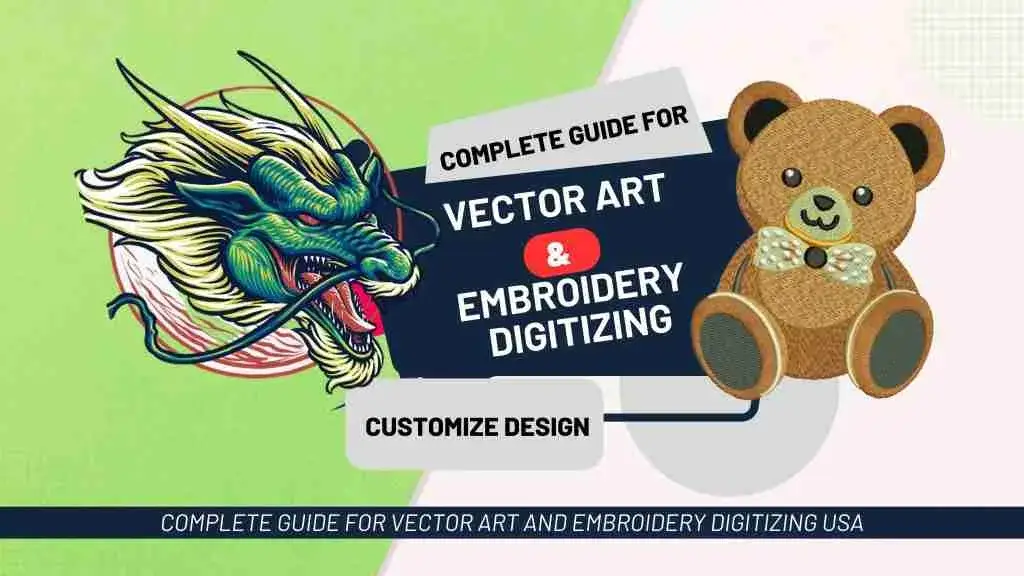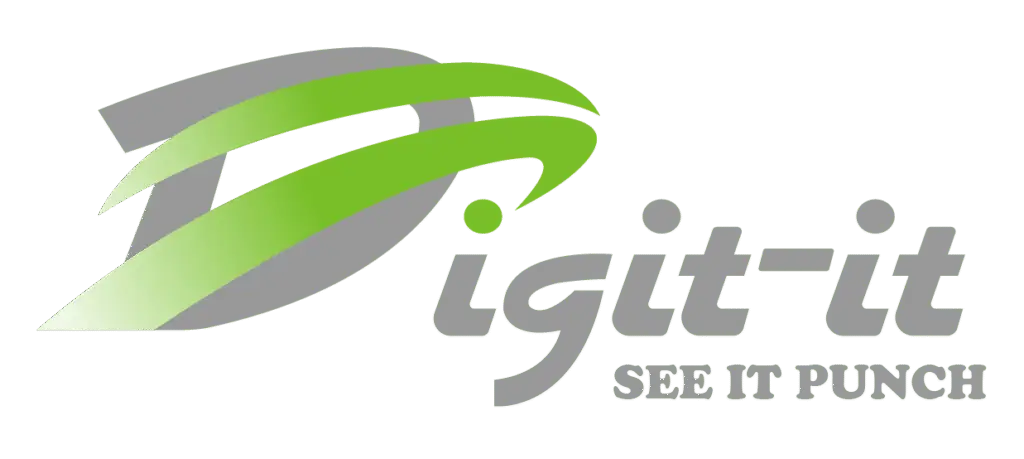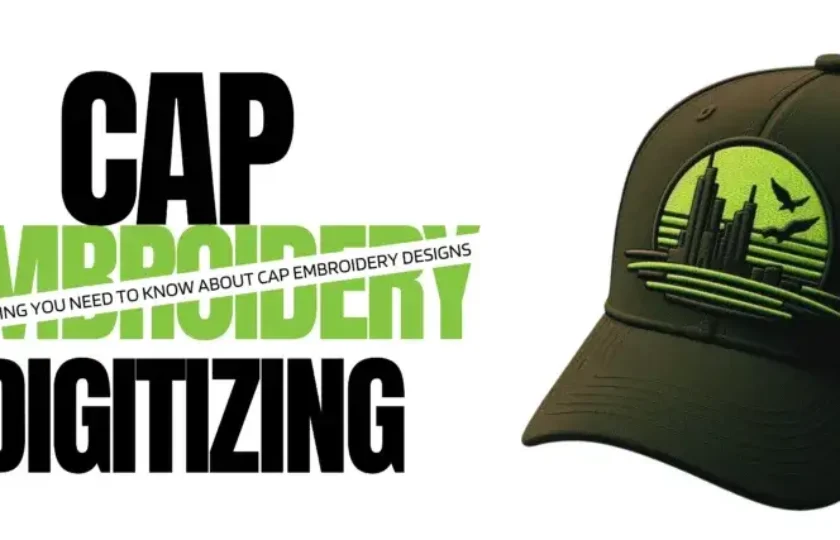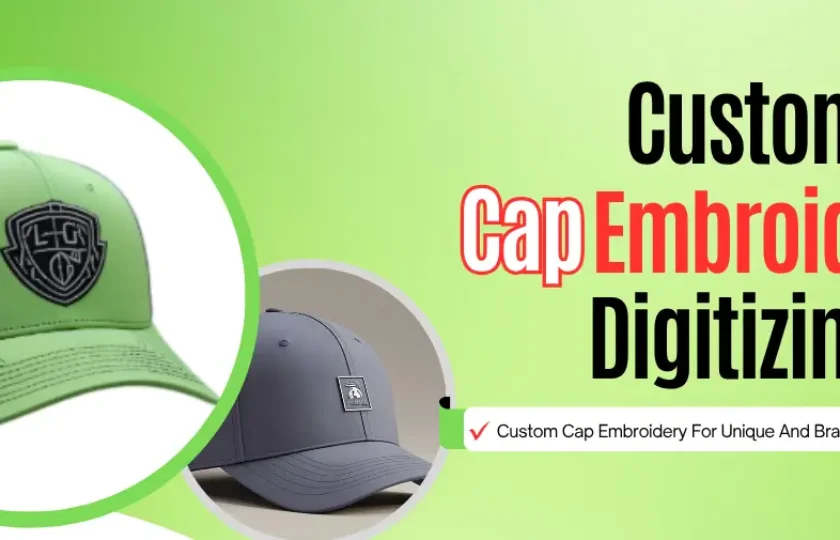What is Embroidery Digitizing USA?
Have you ever wondered what exactly Embroidery digitizing USA entails? Embroidery digitizing is a craft that has gained immense popularity in the United States. It allows for the creation of custom designs on various fabrics. Businesses and individuals use this technique to add a personal touch to clothing, accessories, and more.
Embroidery digitizing USA has become a popular method for creating custom apparel. A skilled digitizer converts images or logos into a format that embroidery machines can understand with the help of special software.
Precision
Precision is a hallmark of embroidery digitizing. Hand embroidery can be time-consuming and susceptible to human error, whereas digitized designs ensure consistent and accurate results. This precision is valuable for businesses that aim for a polished and professional finish.
Versatility
The versatility of embroidery digitizing USA extends across a wide range of fabrics. It includes cotton, denim, leather, and nylon. This adaptability makes it a favored choice for creating personalized apparel, promotional items, and unique gifts.
Durability
A well-executed digitizing process guarantees durable and long-lasting designs. The carefully crafted digital file provides unambiguous instructions to the embroidery machine. It will give clean and well-defined stitches. This quality certifies that the design can withstand regular washing and every day wear.

What are File Formats in Embroidery Digitizing USA?
Machine embroidery file formats are specific types of digital files that contain the information needed for an embroidery machine to recreate a design accurately on fabric. These formats are paramount in the process of converting a visual design into a tangible embroidered piece.
Embroidery digitizing USA is widely popular. So. It’s essential to understand these file formats. They serve as the bridge between the modern era and the physical embroidery machine.
The most common machine embroidery file formats include:
- DST (Tajima): This format is widely recognized and compatible with many embroidery machines. It contains information about stitch types, colors, and their sequence. It enables precise replication of the design.
- PES (Brother): PES files are specifically used for Brother Embroidery machines. They are versatile and support various design elements.
- EXP (Melco): This format is utilized primarily by Melco embroidery machines. It contains instructions for the machine to create the design with accuracy.
- HUS (Husqvarna Viking): HUS files are compatible with Husqvarna Viking machines. They contain data about the design’s layout, colors, and stitch types.
- JEF (Janome): JEF files are designed for Janome embroidery machines. They store information on stitch types, and the design’s overall structure.
- VIP (Pfaff): VIP files are used with Pfaff embroidery machines. They provide detailed information about the design. It allows the machine to reproduce it accurately.
- VP3 (Pfaff): VP3 is another file format used with Pfaff embroidery machines. It contains vital instructions for recreating the design with precision.
The knowledge of embroidery digitizing USA file formats is crucial for anyone involved in the world of embroidery. They serve as the key to transforming digital designs into tangible embroidered creations.
What Skills do you Need to be an Embroidery Digitizer?
Several key skills are essential to excel as an embroidery digitizer. These abilities help individuals to proficiently transform visual designs into digitized files that embroidery machines can execute accurately. The common skills required are highlighted below:
- Attention to Detail: A keen eye for detail is paramount. An embroidery digitizer must carefully examine designs. He should note each element, color, and stitch type. This attention to detail makes sure that the digitized version faithfully replicates the original design.
- Creativity and Artistic Flair: A touch of creativity is equally important with technical proficiency. You need to know how colors and stitches come together to create a visually appealing design.
- Proficiency in Digitizing Software: Knowledge of specialized digitizing software is a cornerstone of the profession. Digitizers use it to convert images or logos into a format that embroidery machines can understand.
- Fabric and Thread Types: Knowing how different fabrics and threads interact with each other and the embroidery machine is vital. This way you can make informed decisions about stitch density, type, and direction and make your design cooler!
- Problem-Solving Abilities: Troubleshooting cannnot be neglected in the digitizing process. You should be able to identify and rectify issues that may arise during the digitizing or stitching process.
- Patience and Persistence: Digitizing intricate or complex designs can be time-consuming. Patience is the key to certify that the final digitized file is of high quality. A persistent approach to problem-solving will also prove beneficial while you are crafting designs.
- Communication Skills: Clear communication with clients or team members is vital to understand their vision and preferences. It will make sure that the digitized design meets their expectations.
- Knowledge of Embroidery Machines: It’s not mandatory, yet having a basic understanding of how embroidery machines operate can be advantageous. It allows the digitizer to create files that are optimized for specific machine models.
- Adaptability to Technology: Technology continues to evolve, so do the tools and software used in embroidery digitizing. Remain open to learning and adapting to new technologies is a valuable skill for staying current in the field.
What are the Steps for Embroidery Digitizing?
Embroidery digitizing USA involves several precise steps to transform a visual design into a digitized file. Let’s look into each step of the embroidery digitizing USA process in more detail:
Design Evaluation
This initial step involves a careful examination of the design. The digitizer closely scrutinizes the visual elements, such as shapes, lines, text, and any intricate details. They also note the colors used in the design. It is done to understand how to replicate the design in a digital format.
Digitizing Software Setup
Specialized digitizing software is essential for this process. The digitizer opens the software and sets up the workspace. You have to configure the canvas size and choose the appropriate settings for the design. The software provides a range of tools for manipulating and refining the design elements.
Inputting Design Elements
Now the digitizer begins to recreate the visual elements of the design using the software. They use tools like drawing tools, shape tools, and text tools to define the various components. Each element is carefully selected and placed on the digital canvas.
Color Assignment
Colors are a crucial aspect of any design. The digitizer assigns specific colors to each element based on the original design. They select from a palette of thread colors available for the embroidery machine. Make sure that the machine uses the correct thread colors during the stitching process.
Setting Stitch Parameters
Stitch parameters refer to settings that determine how the machine will execute the stitches. It refers to factors like stitch length (which influences the texture of the embroidery), stitch density (the spacing between stitches), and stitch direction. Adjusting these parameters will allow to control the final appearance of the embroidered design.
Preview and Adjustment
Generate a preview of the digitized design within the software after inputting all the design elements and configuring settings. It will give a visual representation of how the design will look when embroidered. If any adjustments are needed, such as fine-tuning stitch parameters or repositioning elements, they can be made at this stage.
File Export
Once you are satisfied with the digitized design, it’s time to export it into a format that the embroidery machine can understand. Common formats include DST, PES, EXP, and HUS. The chosen format will depend on the brand and model of the embroidery machine that will be used for production.
Testing on a Sample Fabric
To ensure that the digitized design translates accurately to the fabric, it’s recommended to test it on a sample piece. It will help identify possible issues or areas for improvement before moving forward with the final production.
Sending to the Embroidery Machine
It’s almost done! The last step is to transfer the digitized file to the embroidery machine. This is typically done using a USB drive or any other compatible method of file transfer supported by the specific machine being used.
An embroidery digitizer can create a high-quality digitized file that guides the embroidery machine in producing a precise and faithful representation of the original design on fabric. It’s a meticulous process that requires a combination of technical proficiency, creativity, and attention to detail.
The Role of Vector Art and Graphics in Embroidery Digitizing USA
Have you ever wondered at intricately embroidered designs and thought how they maintain their crispness and clarity, even on the tiniest of stitches? Well, it’s in the world of vector art. It is an unsung hero in the empire of embroidery digitizing USA.

What Exactly is Vector Art?
Imagine a digital design that doesn’t blur or lose detail, no matter how much you zoom in. That’s the power of vector art. Vector art is created using mathematical equations unlike traditional images, which are made up of pixels. This means it can be scaled to any size without losing quality.
Vector Graphics
Now, let’s talk about vector graphics. But what are vector graphics?These are the digital blueprints that guide embroidery machines during the stitching process. Instead of relying on pixels like raster images, vector graphics use points, lines, curves, and shapes to define the design.
In embroidery digitizing USA, precision is paramount. Vector graphics provide this precision by ensuring that each element of the design is defined by mathematical coordinates. This means every stitch is placed with accuracy, resulting in a final product that’s sharp and well-defined.
One of the remarkable aspects of vector graphics is their adaptability. Whether it’s a simple logo or a complex artwork, vector graphics can handle it all. They can be easily edited, resized, and manipulated to suit various embroidery projects. It makes them a versatile tool in the digitizer’s toolkit.
The Significance of Vectors in Creating Art
When you talk about art and design, vectors cannot be ignored. Continue reading to explore into why they’re a crucial tool for artists and designers.
Precision is Paramount in Embroidery Digitizing USA
Embroidery digitizing demands precision. Vectors, unlike raster images, are based on mathematical equations. It allows for infinitely scalable and precise designs. This means that no matter how large or small the design needs to be, it maintains its sharpness and clarity.
Adaptability and Flexibility
Vectors are incredibly versatile. They can be easily edited, resized, and manipulated without sacrificing quality. This flexibility makes them precious in a wide range of creative applications, from logos to intricate illustrations.
Efficiency in the Creative Process
Vectors streamline the process when it comes to complex or intricate designs. Designers can create intricate details with ease, knowing that the design will remain sharp and clear no matter how it’s scaled.
Reduced File Sizes
Vectors are inherently lightweight in terms of file size. This is particularly advantageous for tasks that require sharing or storing designs. It facilitates easier transmission and storage without compromising quality.
Effortless Editing
Vectors allow for non-destructive editing. Elements can be adjusted, moved, or modified without any loss of quality. This gives artists and designers the freedom to experiment and refine their work without limitations.
Ideal for Logos and Branding
In the context of branding consistency and clarity are paramount. Here, vectors shine. They ensure that logos and brand elements can be scaled for any application, from business cards to billboards, while maintaining their integrity.
The Perfect Fit for Embroidery Digitizing USA
In embroidery digitizing USA, vectors are indispensable. They form the basis of the digital blueprints that guide embroidery machines. They certify that each stitch is executed with utmost accuracy.
The use of vectors in creating art, particularly in the context of embroidery digitizing USA, is not just a preference, but a necessity. Their precision, adaptability, and efficiency make them an invaluable tool for artists and designers.
What can I Make with Vector Art?
The applications of vector art are as diverse as they are impressive. Let’s explore the myriad possibilities that come to life with this versatile medium.
Custom Apparel and Accessories
Vector art serves as the foundation for intricate embroidered designs on clothing, hats, bags, and more. Its scalability ensures that every stitch retains its clarity and detail. It will provide professional-grade custom wear.
Logo Branding and Corporate Identity
Vectors are the go-to for creating and reproducing logos with precision. Businesses in the USA rely on this format for consistent branding across various materials, from business cards to promotional merchandise.
Intricate Patterns and Textures
Designers use vectors to craft detailed patterns and textures that can be applied to fabrics, wallpapers, or other surfaces. It helps in the creation of visually stunning and repeatable motifs.
Illustrations for Print and Web
Vector illustrations are versatile assets for both print and web applications. From posters and brochures to websites and social media graphics, they provide high-quality visuals that can be resized without loss of detail.
Embroidered Art and Keepsakes
Vector art serves as the blueprint beyond apparel. They can be used for personalized embroidered gifts and keepsakes. Whether it’s monograms on towels or intricate designs on blankets, the possibilities for heartfelt creations are boundless.
Engravings and Laser Cut Designs
Vector files are indispensable for precision engraving and laser cutting. They permit intricate and highly detailed designs on materials like wood, acrylic, and metal.
Vinyl Decals and Stickers
Vectors are the foundation for creating vinyl decals and stickers. Their scalability ensures that even the smallest details are accurately reproduced.
Architectural Plans and Designs
In architecture, vectors are used for creating precise floor plans, elevations, and other technical drawings. Their accuracy is crucial in certifying that designs are executed exactly as intended.
Animation and Multimedia
Vectors play a crucial role in animation and multimedia projects. Their scalability and flexibility make them ideal for creating smooth and high-quality animations.
Infographics and Presentations
Vectors are perfect for creating visually appealing infographics and presentations. It permits the incorporation of detailed charts, graphs, and illustrations that maintain clarity regardless of size.
In a nutshell, the versatility of vector art in embroidery digitizing USA knows no bounds. From personalized apparel to detailed illustrations and beyond, it’s a powerful medium that empowers designers and businesses to create with precision and clarity. The potential for unique and high-quality creations is limited only by one’s imagination.
Which People can use Vector Art?
Vector art is a versatile tool accessible to a wide range of individuals across various industries and creative pursuits. Professionals in fields like graphic design, architecture, and engineering benefit from its precise and scalable nature.
Graphic designers rely on vector art to craft logos and illustrations that can be resized without sacrificing quality. Architects and engineers use it for creating accurate technical drawings and blueprints. Additionally, fashion designers utilize vector art to design custom apparel and accessories. They use it to ensure that intricate patterns and designs maintain their clarity and precision.
Beyond the professional sphere, vector art is also invaluable for hobbyists, crafters, and educators. Hobbyists and crafters can use vector art for personal projects such as creating unique gifts or home decor.
Vector art serves as a valuable tool for teaching design principles and technical drawing in educational settings. Students can practice creating precise and scalable designs, honing their skills in digital illustration and graphic design.

How Long have we been using Vectors for?
Vectors, as a mathematical concept, have been utilized in various fields of science and mathematics for centuries. However, in the context of digital graphics and design, the widespread use of embroidery digitizing USA and vector graphics became prominent with the advent of computer technology in the latter half of the 20th century.
The concept of vector graphics was introduced in the 1960s. Early applications were primarily in scientific and engineering fields where precision and scalability were crucial, such as in Computer-Aided Design software.
In the late 1980s, with the development of personal computers, graphic designers and illustrators began using vector-based software for creating digital images. Adobe Illustrator, one of the pioneering vector-based software was first released in 1987.
Since then, the use of vector graphics has grown exponentially. Today, it’s an integral part of various industries such as graphic design, engineering, architecture, and fashion.
Conclusion
You have learned everything about embroidery digitizing USA. In the vibrant world of creativity and precision, embroidery digitizing USA and vector art emerges as the unsung hero. It offers boundless potential for artists, designers, and professionals across various industries. Its remarkable scalability and accuracy have revolutionized fields as diverse as graphic design, engineering, fashion, and embroidery digitizing, especially in regions like the USA where this craft thrives.
The versatility of embroidery digitizing USA knows no bounds from crafting intricate logos to engineering precise architectural plans. Whether you’re a seasoned professional or an enthusiastic hobbyist, the power of vector art opens up a world of possibilities. So, follow this digital marvel and let your imagination soar, as you bring your visions to life with unparalleled clarity and precision.




